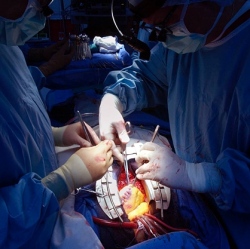
Your bones are masterful self-healers, but certain injuries and defects can leave a gap too wide for new bone cells to fill in. Texas A&M’s Dr. Melissa Grunlan and team have come up with a solution, a biodegradable polymer sponge that supports new bone cell growth, then disappears as it’s replaced by solid bone.
There are many conditions that can lead to a hole or gap too big for bone cells to naturally fill in: birth defects, bone infections, and drastic surgeries for tumour removal are just some of them. Currently, our best technique for fixing such problems is a bone graft from a different part of the patient’s body. But often such grafts won’t take, and they aren’t suited for the complex shapes needed to fix bone deformities in the face.
Dr. Grunlan’s team’s shape-memory polymer foam serves as a scaffold, spanning gaps in healthy bone and providing a structure for new bone cells to take hold and develop. The polymer is biodegradable, slowly dissolving as bone cells take over and disappearing when the healing process is complete.
